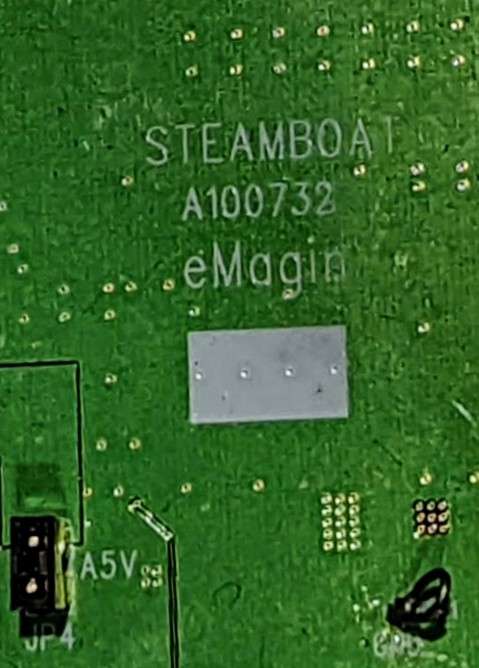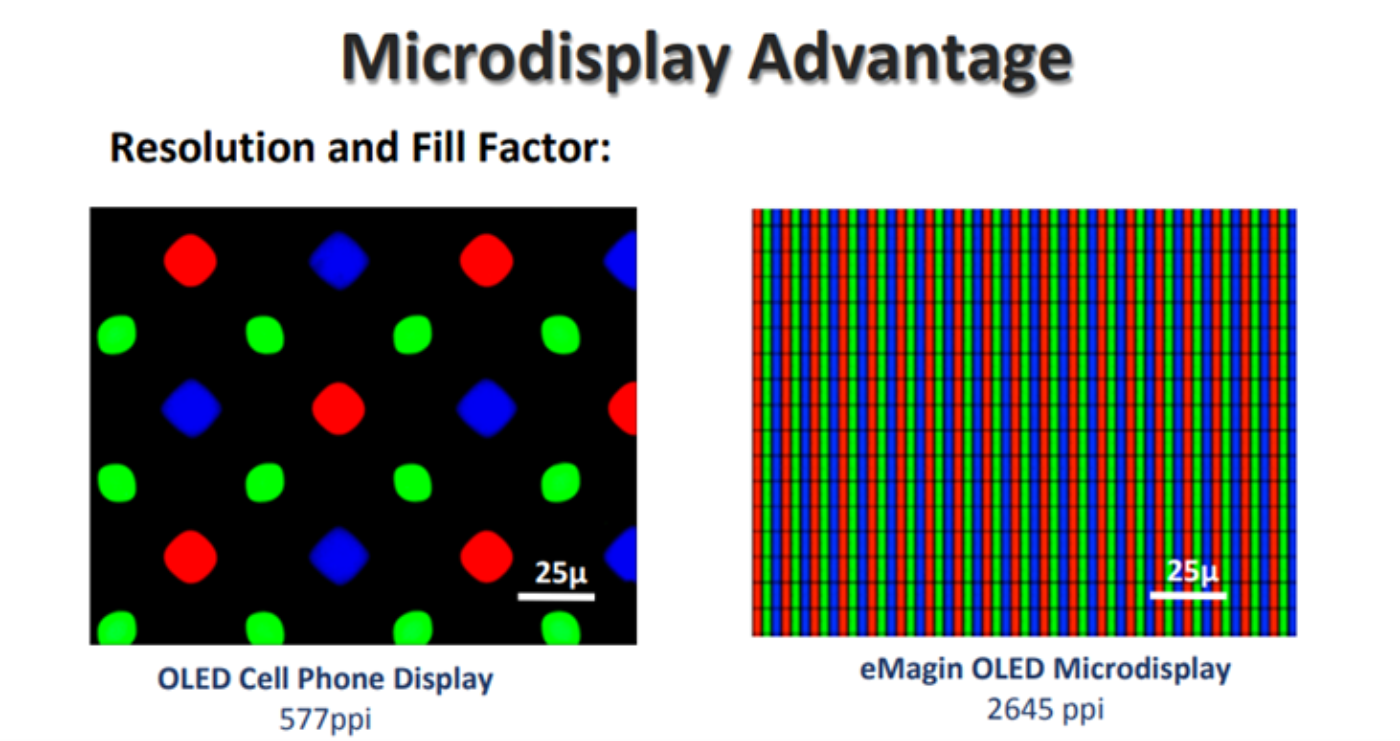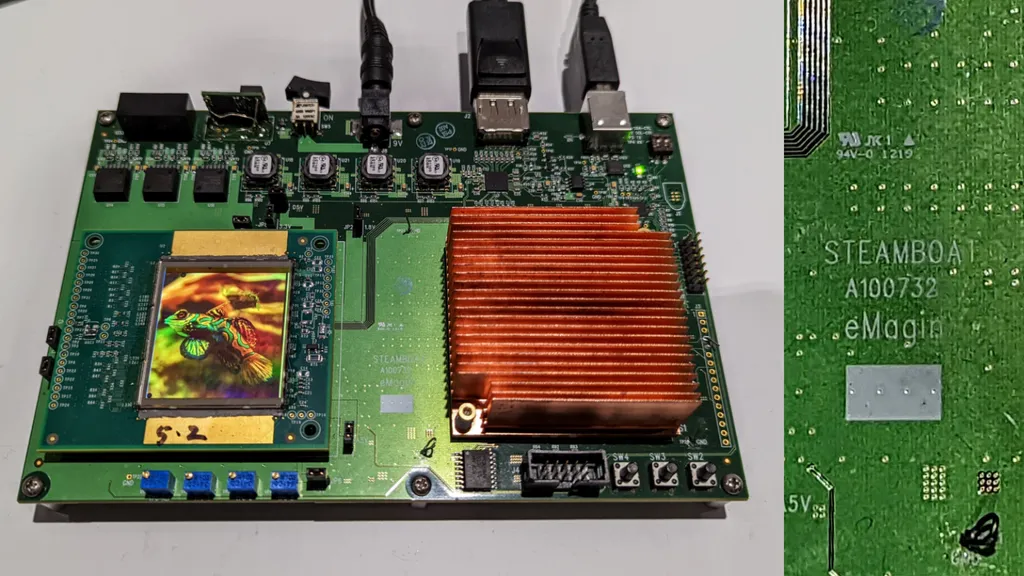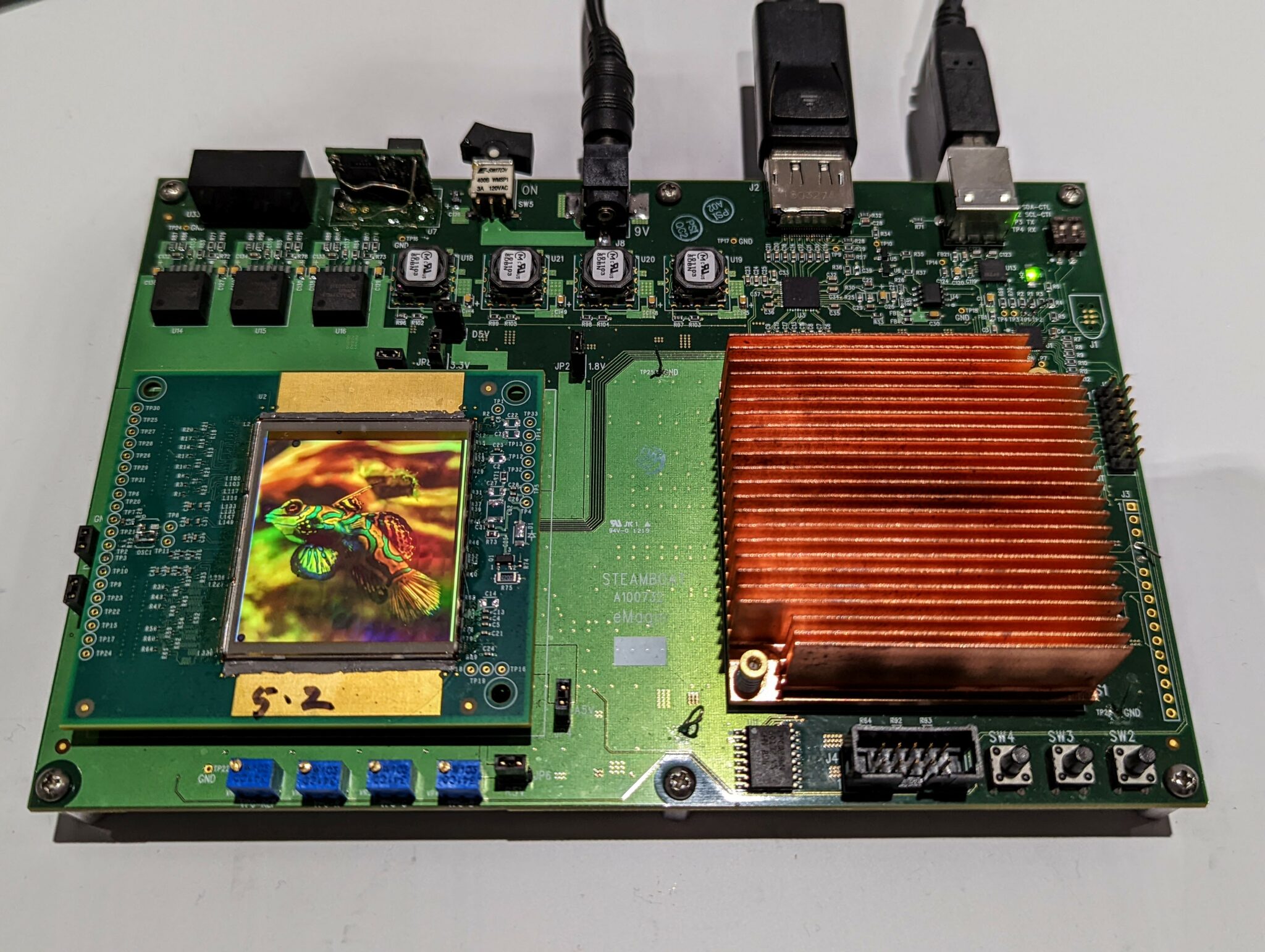At Display Week 2022 eMagin presented a 4K OLED microdisplay for ultra slim VR headsets.
OLED “microdisplays” are manufactured differently than smartphone or TV sized OLED panels – directly onto silicon wafers. The result is a much higher pixel density but also a much smaller size. Usually such microdisplays are 1 inch diagonal or less, which is hard to magnify over a large field of view and limits the resolution possible.
But eMagin’s new microdisplay is 2.1 inches – almost as large as the latest set of compact regular panels intended for headsets with pancake lenses. As it maintains the same density as eMagin’s previous products, but is also much larger, the new microdisplay’s resolution of 3600×4000 could practically be used in VR headsets without compromising field of view. The refresh rate is 120 Hz.
As far as we’re aware, this is the highest resolution OLED microdisplay ever presented. It’s also the brightest – at 1000 nits in low persistence mode – making it suitable for lenses which trade off optical efficiency for other specs like form factor and sharpness.
eMagin CEO Andrew Sculley told me this 4K microdisplay was developed alongside a partner based on their requirements for a proof of concept VR headset. But who exactly is, or was, this partner? A marking on the board the microdisplay was demonstrated on may offer a not so subtle hint: “STEAMBOAT”

In September YouTuber Bradley Lynch found evidence of a Valve standalone VR headset codenamed ‘Deckard’ in SteamVR driver files, and and Ars Technica said its sources confirmed Deckard’s existence.
Sculley declined to say whether the partner in question was Valve, but said there there was a second partner – a “larger company” – involved too. In November, supply chain analyst Ming-Chi Kuo claimed Apple’s rumored mixed reality headset will feature 4K OLED microdisplays. Meta also indicated it is exploring OLED microdisplays for future products, and a report last week suggested Meta could follow up its expensive Project Cambria with a successor in 2024.

eMagin doesn’t itself have the manufacturing capacity or finances to produce this at the scale needed for consumer products, but Sculley told me this is partners can fund & work with them on. He says the display itself is suitable for mass production.
When that does happen – Sculley seemed to suggest no earlier than 18 months from now – it could usher in a new class of premium yet compact headsets, with OLED’s unbeatable contrast and the sharpness usually only seen in LCDs.





























